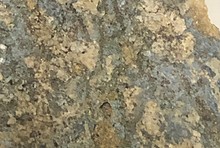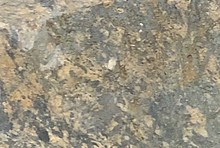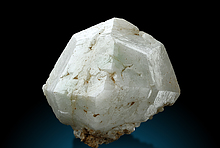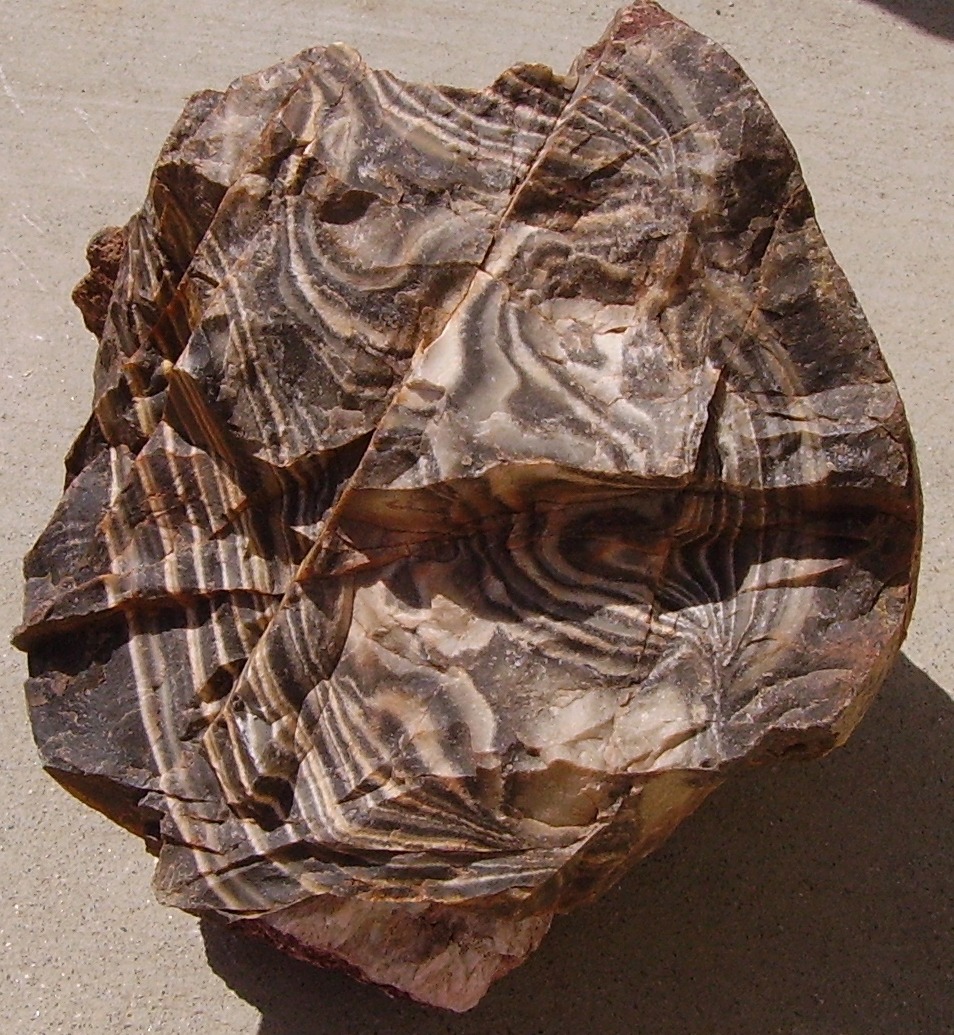Home PageAbout MindatThe Mindat ManualHistory of MindatCopyright StatusWho We AreContact UsAdvertise on Mindat
Donate to MindatCorporate SponsorshipSponsor a PageSponsored PagesMindat AdvertisersAdvertise on Mindat
Learning CenterWhat is a mineral?The most common minerals on earthInformation for EducatorsMindat ArticlesThe ElementsThe Rock H. Currier Digital LibraryGeologic Time
Minerals by PropertiesMinerals by ChemistryAdvanced Locality SearchRandom MineralRandom LocalitySearch by minIDLocalities Near MeSearch ArticlesSearch GlossaryMore Search Options
The Mindat ManualAdd a New PhotoRate PhotosLocality Edit ReportCoordinate Completion ReportAdd Glossary Item
Mining CompaniesStatisticsUsersMineral MuseumsClubs & OrganizationsMineral Shows & EventsThe Mindat DirectoryDevice SettingsThe Mineral Quiz
Photo SearchPhoto GalleriesSearch by ColorNew Photos TodayNew Photos YesterdayMembers' Photo GalleriesPast Photo of the Day GalleryPhotography
╳Discussions
💬 Home🔎 Search📅 LatestGroups
EducationOpen discussion area.Fakes & FraudsOpen discussion area.Field CollectingOpen discussion area.FossilsOpen discussion area.Gems and GemologyOpen discussion area.GeneralOpen discussion area.How to ContributeOpen discussion area.Identity HelpOpen discussion area.Improving Mindat.orgOpen discussion area.LocalitiesOpen discussion area.Lost and Stolen SpecimensOpen discussion area.MarketplaceOpen discussion area.MeteoritesOpen discussion area.Mindat ProductsOpen discussion area.Mineral ExchangesOpen discussion area.Mineral PhotographyOpen discussion area.Mineral ShowsOpen discussion area.Mineralogical ClassificationOpen discussion area.Mineralogy CourseOpen discussion area.MineralsOpen discussion area.Minerals and MuseumsOpen discussion area.PhotosOpen discussion area.Techniques for CollectorsOpen discussion area.The Rock H. Currier Digital LibraryOpen discussion area.UV MineralsOpen discussion area.Recent Images in Discussions
Field CollectingZebra stone

9th Aug 2012 05:20 UTCSophiaJoy MB
Thanks!

9th Aug 2012 08:09 UTCStephen Turner
Cheers,
Steve
9th Aug 2012 12:00 UTCRock Currier Expert
Stephen, thanks for the "definition" of Zebra stone I have added it to mindat's glossary where It may in the future serve a more useful purpose than being burried in the message board posts.
Is someone comes forward with a description and locality for the Brazilian locality, Ill add that to our glossary on the same page.

9th Aug 2012 12:06 UTCWOLFGANG NOACK
9th Aug 2012 12:28 UTCRock Currier Expert
Does the zebra stone from Australia need to be filled with something for it to take a good polish?

9th Aug 2012 13:46 UTCjulie g. powell
9th Aug 2012 14:05 UTCStephanie Martin
As usual there are always fakes and such so you should be wary of anything that looks too uniform as it could be manufactured.
regards,
stephanie

9th Aug 2012 19:25 UTCRobert Joynes
The zebra stone is in the Ranford Formation and the one I know on the old road, is at the base of a mesa, 25 ft ( 7.5 m) high, sat on top of a 400 ft ( 120m ) scree slope covered in spinifex grass. (And a bl**dy difficult climb, too!);-)
An in situ photo of a seam of zebra stone that I took last year. You can see where people have tried to extract the stone.
http://i173.photobucket.com/albums/w44/BobbyQld/2010Trip067.jpg
Bob.
9th Aug 2012 20:02 UTCRock Currier Expert
So many times lapidary materials fall between the cracks here on mindat and their accurate localities are quickly lost and forgotten. I have been hoping for a long time that a real agate nut would sign up here on mindat and make it his/her objective to find images and accurate localities for many of the different kinds of agate and other lapidary materials that could be uploaded to Mindat.
9th Aug 2012 21:29 UTCStephanie Martin
thanks for any info,
stephanie :-)

9th Aug 2012 22:52 UTCWOLFGANG NOACK
to answer your question no filler needed the material cuts well sands well to a semi polish but does not take polish with ordinary means the polish compound gets trapped on the stone and can only removed with great difficulty gets stuck into the microscopic pores of the stone can possible polished with diamond compounds have not tried this so far so most people use clear paint or liquid glass to achieve a kind of polished item hope this answers some questions
wolf
9th Aug 2012 23:05 UTCDennis Tryon
9th Aug 2012 23:11 UTCJolyon Ralph Founder
9th Aug 2012 23:38 UTCStephanie Martin
9th Aug 2012 23:54 UTCDavid Von Bargen Manager
http://www.minsocam.org/ammin/AM16/AM16_221.pdf
10th Aug 2012 00:23 UTCStephanie Martin
10th Aug 2012 08:17 UTCRalph S Bottrill 🌟 Manager
10th Aug 2012 11:27 UTCRock Currier Expert
10th Aug 2012 11:29 UTCRock Currier Expert
10th Aug 2012 11:32 UTCRock Currier Expert

10th Aug 2012 13:58 UTCTom Kapitany
The patterns are created by cyanobacterial mats infilling ripple marks in a low energy shallow marine environment .
The tubular patterns occurs as these Cyanobacterial mats start to dome up in the ripple marks and are then rapidly covered by further sedimentation.
If the environmental conditions are stable , these mats join creating large flat sheets .
Plastic deformation occurs creating more unusual patterns , as further sediments are deposited over them .
There are at least 7 actively collected deposits , some of which are very porous , others quite hard and can be polished without fillers by skilled lapidarists .
The photo shown was probably taken on my lease .
These Cyanobacteria structures were originally described by Walcott (smithsonian) as Newlandia frondulosa
algal colonies , but was dismissed until quite recent times .
Similar patterns can be found in ancient rocks throughout the world , but the most visual are from Western Australia .
Print Stone also from Western Australiais found near Mt Tom Price was considered to be a consequence of Liesegang Rings (differential permeability of minerals in plastic sediments ). Dated at nearly 2.7 billion years old
These are now being considered to be of biogenic origin being described as Kennia simulans
(can't remember exact spelling)
Brazilian zebra stone is a jasper , many jaspers are colored by biogenic material before they are metamorphosed and silicified.
But it looks very different from the Western Australian stone

10th Aug 2012 19:01 UTCRobert Joynes
-------------------------------------------------------
> Robert - is this material also referred to as
> "print stone" or "newsprint jasper"? Or is that
> different material? Based on the photo I am
> curious as it looks a lot like material I have
> seen referenced as print stone.
>
> thanks for any info,
> stephanie :-)
G'day mate, never heard of it being called 'print stone'. A few of the tourists in the early days (ca 1960s, well before the Argyle deposit was inundated), used to term it as 'leopard stone, or 'tiger stone', depending on spots or wavy lines.
Bob.

10th Aug 2012 19:13 UTCRobert Joynes
-------------------------------------------------------
> Zebra stone is found throughout the Ranford
> formation and is dated around 680 millions years
> old
> The patterns are created by cyanobacterial mats
> infilling ripple marks in a low energy shallow
> marine environment .
> The tubular patterns occurs as these
> Cyanobacterial mats start to dome up in the ripple
> marks and are then rapidly covered by further
> sedimentation.
> If the environmental conditions are stable , these
> mats join creating large flat sheets .
> Plastic deformation occurs creating more unusual
> patterns , as further sediments are deposited
> over them .
> There are at least 7 actively collected deposits ,
> some of which are very porous , others quite hard
> and can be polished without fillers by skilled
> lapidarists .
> The photo shown was probably taken on my lease
> .
> These Cyanobacteria structures were originally
> described by Walcott (smithsonian) as Newlandia
> frondulosa
> algal colonies , but was dismissed until quite
> recent times .
> Similar patterns can be found in ancient rocks
> throughout the world , but the most visual are
> from Western Australia .
>
> Print Stone also from Western Australiais found
> near Mt Tom Price was considered to be a
> consequence of Liasang Rings
> (differential permeability of minerals in plastic
> sediments ) . Dated at nearly 2.7 billion years
> old
> These are now being considered to be of biogenic
> origin being described as Kennia simulans
> (can't remember exact spelling)
>
> Brazilian zebra stone is a jasper , many jaspers
> are colored by biogenic material before they are
> metamorphosed and silicified.
> But it looks very different from the Western
> Australian stone
Ahh, so you have the gallery down the Old Duncan Hwy. Mate, I hope that you don't prosecute me for taking the pic on your lease. I went around across the "saddle"and saw an old 'dozer track that had been made.
I knew that area in 1964 (worked for Main Roads in those days....:-);-)
A question, Tom, did you see any 'fossil jellyfish' on the top of the mesa?? They were "all the rage" about 1967/8 whether they were fossils, being precambrian and all that...I have a couple of specimens.
Bob.
10th Aug 2012 20:35 UTCDennis Tryon
Dennis
10th Aug 2012 21:12 UTCJolyon Ralph Founder
http://farm7.static.flickr.com/6018/6000988092_c8c7be005b.jpg


11th Aug 2012 04:30 UTCTom Kapitany
It's not actually from my lease .
I have a number of projects in the area
I pegged the escarpment lease particularly for the Jelly fish
Actually they are a Porpita species similar to a" By the wind sailer" Neoproterozoic of age
predating the Ediacaran faunas .
The Western Australian Museum still refers to them as evaporites , but many international scientists accept them as being of biogenic
Origin .
This photo shows the ripple mark effect
You can email me privately if anyone is interested in seeing more pictures
Tomk@crystal-world.com
11th Aug 2012 04:51 UTCStephanie Martin
I rounded up a few small sample stones I had handy for a group shot.
Left: Brazil
Centre on stand: Australia
Right, black and white - Utah
I was once told some black and white material hailed from Brazil but I believe the dealer may have gotten it confused. The black and white material takes a nice high polish and seems to be dolomitic marble. The Australian stone has a matte finish and this may be what is being referred to above about some Australian material not taking a good high polish.

11th Aug 2012 05:13 UTCSophiaJoy MB
Stephanie,
I didn't know black&white zebra stones are from Utah. Thanks a lot!

11th Aug 2012 05:40 UTCTom Kapitany
11th Aug 2012 06:18 UTCStephanie Martin
Thanks for any info.
regards,
stephanie

11th Aug 2012 06:43 UTCTom Kapitany
These names are used in marketing .and in more recent times being trademarked to create exclusivity .
There are names such as okapi stone , astronomite , pudding stone used to describe zebra store here in Australia
So what's in a name ?
The Australian zebra stones and print stones are poorly silicified siltstones that have had little if any metamorphism (natural thermal heating )
And hence tend to be very porous .
The other stones are heavily metamorphosed and became Jasper's rather than siltstones which they mostly likely were at the time they were deposited.
Google zebra stone and you will find various sites showing worked stones .
The sites may contain confusing or misleading information such as "it is only found in lake argyle and the deposit is under water" , to create th perception of rarity .
But to be fair some patterns/ locations are no longer accessible due to rising lake levels .
Hope this helps
Tomk

11th Aug 2012 06:43 UTCTom Kapitany
These names are used in marketing .and in more recent times being trademarked to create exclusivity .
There are names such as okapi stone , astronomite , pudding stone used to describe zebra store here in Australia
So what's in a name ?
The Australian zebra stones and print stones are poorly silicified siltstones that have had little if any metamorphism (natural thermal heating )
And hence tend to be very porous .
The other stones are heavily metamorphosed and became Jasper's rather than siltstones which they mostly likely were at the time they were deposited.
Google zebra stone and you will find various sites showing worked stones .
The sites may contain confusing or misleading information such as "it is only found in lake argyle and the deposit is under water" , to create th perception of rarity .
But to be fair some patterns/ locations are no longer accessible due to rising lake levels .
Hope this helps
Tomk
11th Aug 2012 09:47 UTCRock Currier Expert
Can you site some literature reference about the zebra stone from your claim. Can someone please upload some images to Mindat's gallery so I can use them in the glossary description?

11th Aug 2012 10:38 UTCTomK Kapitany
It's a fair request !
Claims or otherwise , they involve years of field work in the Kimberleys and the outback , helicopters , 4wheel drives , and lots of foot work , sea planes etc
One of my specialities is Deep Time , Early life from Archean to Proterozioc . Impact structures , Banded iron formations ,ancient zircons and the oldest crustal rocks
I travel the world visiting these sites.
Scientists in this county have little time or interest in Zebra stone and quote outdated literature .
I have amassed a significant amount of scientific documentation discussing similar biogenic occurances around the world .
The Tucson show is the perfect environment to discuss these observations which I have attended there for nearly 24 years as you are well aware .
I very happy for anyone to challenge my observations , but as you realise in any scientific circles there will alway be debate and alternative theories.
I supply specimens to many research scientists and institutions world wide .
I will publish in good time , but I am too busy exploring and travelling , to be concerned whether or not someone may disagree with me .
But no one as yet has challenged me. I would welcome the debate.
The problem lays with arm chair scientists that spend little or no time in the field , and come up with theories based on a small number of selected specimens
In the museum collection and then publish without proper field experience .
The biogenic influences on Archean and Proterozoic rocks is a hotly debated subject at the moment particularly as the landing of Curiosity on Mars and it's search for life or signs of past life .
Unfortunately we are still trying to understand the origins of life of this planet. The signs are every where , we are just starting to learn how to recognise them .
It doesn't really answer your request but Its a great platform for me create some discussion and debate .
Are you aware on the scientific paper that discusses the "Evolution of Minerals " as a consequence of the oxygenation of the planet caused by Cyanobacteria in the Archean ?
14th Aug 2012 10:37 UTCRalph S Bottrill 🌟 Manager
very interesting, great to get your input.
Did Walcott descibe these specific structures or similar ones from America?
Unfortunately unless we get a formal reference we can quote, this sort of information can get lost or dismissed easily.

14th Aug 2012 11:27 UTCTom Kapitany
Its a very old reference historically and personally as well
He described them from structures found in USA which appear very simliar , in the 1920s i believe
I will try to find it , but I am about to travel shorltly
I have spent near 6 months this year out of the country .
I plan to start publishing in the next year or two but currently have some major projects and mining operations planned .
There is a face book page "Australian Crystals and Minerals" started by Patrick Gunderson , that I am regularly posting
some of my mineral projects on .
Currently in a major dispute with West Australian Museum over them trying to take away an exploration licence from the Indigenous community in Fitzroy crossing , on land they own freehold and well as Native title claim , so that they would have no right to explore and develop fossil deposits by creating a museum and research facility in the region . The scientists and the museum treat the locals with indifference , providing them a childrens book as a way of teaching them about the fossils .
I am trying to help them and encouraged the West Aust museum to get involved . Their answer is to stop the project. If scientists can control the science , they get tenure . Very disapointing and self serviving attitude .
Re zebra stone info getting lost ,, thats what google and wikipedia are good for .
14th Aug 2012 12:00 UTCRalph S Bottrill 🌟 Manager
everyone knows palaeontologists own the world's fossils!
There was an interesting talk at the International Geological Congress last week, about a push in America to form more fossil parks where people, children especially, can go to collect fossils (but not rare ones of course). Commercial fossil dealers were naturally discussed with disdain, but they did at least see the point in encouraging children, with the hope they will foster an future interest in geology. But it would be interesting to know what proportion of fossils in most museums was collected by professional scientists! Professional palaeontologists need to oversee and mentor collectors, to educate them and help identify and preserve the important finds, lest they become extinct themselves, but we have a long way to go.
I guess you are correct with Wikipedia etc, but its still entrenched with most older scientists that we must publish in peer-reviewed journals.
And if you ever work out how to upload photos from an ipad please let me know!

14th Aug 2012 13:09 UTCTom Kapitany
I will have to quote you on that one
It's great to hear there is some common sense in the USA re fossils
Peer review is great but it's becoming dated.
It really annoys me that I have to pay crazy amounts to access published articles in journal that require subscriptions
when the science s done with public funds .
The Internet is revolutionizing the way we access information . The ability to self publish without the restrictions some scientists create ensure that only their theories are advanced .
We will see a revolution of new ideas right and wrong with this open source information .
Just for curiosity google" trilobite molecule" and then consider the electromagnetic force of atoms and molecules potentially involved in evolving complex organic structures .
And the implications on this process in the evolutionary process of life .
regards tomk
It's not my theory , but this theory is being considered heretical in some scientific circles .
14th Aug 2012 14:51 UTCDavid Von Bargen Manager
http://books.google.com/books?hl=en&lr=&id=jqsKAAAAIAAJ&oi=fnd&pg=PR1&dq=Walcott+Newlandia+frondosa&ots=-1DX5_b2sc&sig=ypSY83NEQJdALxXocXWY45MwOE4#v=onepage&q=Walcott%20Newlandia%20frondosa&f=false

14th Aug 2012 15:02 UTCTom Kapitany
His findings were dismissed until recent ties I believe
do you have Ian's information on this ?

14th Aug 2012 15:35 UTCOliver
Cheers
16th Aug 2012 14:32 UTCRalph S Bottrill 🌟 Manager
we have gone way off track but the trilobite molecule is fascinating, though its a long bow to run from Ru molecules to evolution.
I must agree scientific journals are way too expensive, but its usually free or cheap tp publish, so as not to just make it a forum for a few rich institutions. And the peer review system has good and bad features. It stops people writing unsubstantiated articles without sufficient facts or logic, but it can exclude novel ideas at times. People still write anything in books or on the internet, but books are not always valued as references, and internet articles quite rarely, at least with scientists, unless they get some peer review or other qualification. You cannot believe too much on the internet (except most of Mindat of course!). New ideas are not always useful unless people have to tools to filter the rubbish out, and most people dont (witness the continuing growth of crystal healing etc).

16th Aug 2012 23:16 UTCAJMI
Unfortunately, not always.
Numerous Journal articles on everything from faked fossils to cold fusion to female hysteria to shock therapy to creationism to spontaneous generation to martian canals to phrenology to climate change to intelligent design and alchemy/metaphysics, etc. have been written in the past 100 years or so - many fraudulently, all without sufficient facts or logic.
Today there's still no way to stop people from writing/publishing such unsubstantiated articles. At best, we can hope for followup research to quickly correct for such things. At worst, common people start to act upon the unsubstantiated articles and then they (and their children) suffer because of it.
17th Aug 2012 11:35 UTCRock Currier Expert
Can you upload the image to our database? Ill stick it in the golssary under zebra stone.
17th Aug 2012 14:11 UTCRalph S Bottrill 🌟 Manager

17th Aug 2012 15:16 UTCKim Macdonald
The Printstone could be referring to material mined near Tom Price by a Western Australian mineral dealer who goes to Tuscon each year with drums of material from the State. As Ralph has mentioned there are probably dozens of rocks marketed around the world as Zebra Stone. Near Paynes Find in Western Australia is a Zebra Quartz of quartz and basalt layers. I have examples of types of Zebra Stone from Argyle marketed as Okapi Stone, Astronomite, Rainbow Stone, and Ribbon Stone, which are all variations of Zebra Stone given fancy names. I have been meaning to upload photos but been too busy wriring articles on Mindat. Will try to get to it soon. Much of the deposits were drowned under Lake Argyle which is the size of a small sea, but as noted above material can still be found in the region. Local shops in Kununurra sell it if you are not keen on climbing cliffs, although possibly more fun.
17th Aug 2012 21:22 UTCRock Currier Expert

9th Nov 2014 21:52 UTCearsz70

9th Nov 2014 23:11 UTCColin Robinson
It's whatever you want it to be. As there is no definition of what constitutes zebra stone you can call it anything you like. My preference would be to call it simply a lump of rock but that's not really good marketing practice.
10th Nov 2014 18:53 UTCRock Currier Expert




Mindat.org is an outreach project of the Hudson Institute of Mineralogy, a 501(c)(3) not-for-profit organization.
Copyright © mindat.org and the Hudson Institute of Mineralogy 1993-2024, except where stated. Most political location boundaries are © OpenStreetMap contributors. Mindat.org relies on the contributions of thousands of members and supporters. Founded in 2000 by Jolyon Ralph.
Privacy Policy - Terms & Conditions - Contact Us / DMCA issues - Report a bug/vulnerability Current server date and time: April 23, 2024 06:30:46
Copyright © mindat.org and the Hudson Institute of Mineralogy 1993-2024, except where stated. Most political location boundaries are © OpenStreetMap contributors. Mindat.org relies on the contributions of thousands of members and supporters. Founded in 2000 by Jolyon Ralph.
Privacy Policy - Terms & Conditions - Contact Us / DMCA issues - Report a bug/vulnerability Current server date and time: April 23, 2024 06:30:46















